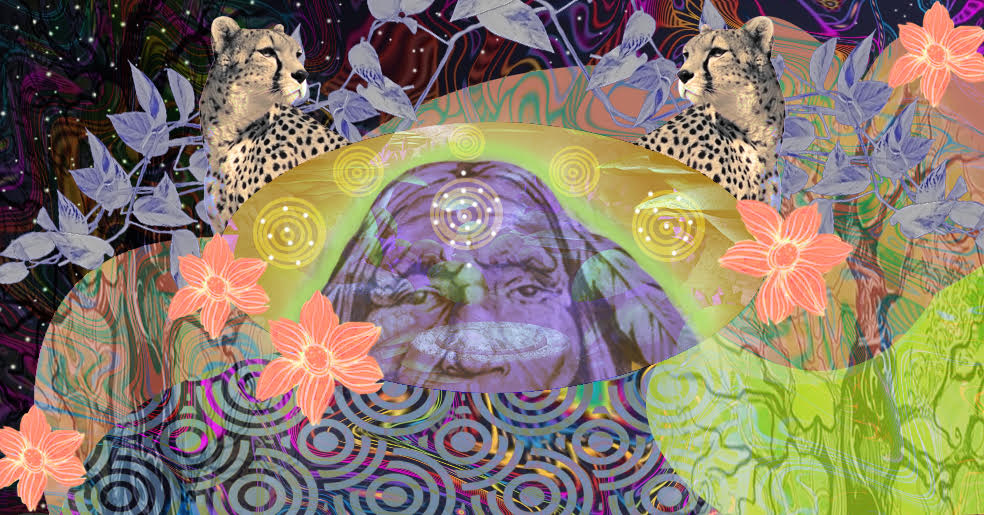- Breaking Convention Conference Lives Up to Its Psychedelic Reputation - May 31, 2023
- Creating Awareness on Sexual Abuse in Ayahuasca Communities: A Review of Chacruna’s Guidelines - February 8, 2022
- Iquitos, Capital of Ayahuasca, Struggles During COVID - October 19, 2020
When a Canadian man was lynched by a Shipibo community in Peru earlier this year, after murdering one of their most treasured healers, 81-year-old Olivia Arevalo, there were cries of outrage worldwide over the fact that ayahuasca tourism remains unregulated.
Through sources in Iquitos, I discovered that the culprit-turned-victim, Sebastian Woodroffe, had previously been refused entry to Canadian ayahuasca circles due to mental instability, yet he was able to access ayahuasca in Peru as an ayahuasca tourist. He knew of Olivia through an ayahuasca center in Iquitos, the hub of ayahuasca tourism. Although the double murder occurred in Olivia’s community near Pucallpa, where Woodroffe had been visiting solo for some time, it is arguable this atrocity could have been avoided if ayahuasca tourism was restricted.
I have lived and worked in Iquitos since 2014. Here, the possibility of regulating ayahuasca tourism has been a key issue for some time. In fact, substantial moves have already been made by the government and insiders in the direction of regulation.
In this article, I will address the argument for regulating ayahuasca tourism, consider the practicalities of law enforcement in the jungle, and describe the progress and pitfalls with efforts so far to regulate.
The Unregulated World of Ayahuasca Tourism

There are currently around 150 ayahuasca centers and suppliers in the Iquitos region alone, with the vast majority of these operating as unregistered businesses. They therefore do not pay taxes; so, it could be said they benefit from local resources and culture without contributing. There are very few ways of holding them officially responsible for the care of their guests; thus, if something goes wrong, nobody is held accountable.
Although ayahuasca is generally safe to use, proper shamanic work requires experienced practitioners and, as things now stand, anyone can set up an ayahuasca center and serve medicine. Somebody totally unqualified can masquerade as an ayahuasca “shaman” simply by learning a few songs and perhaps donning a headdress. Indeed, it is often said, “Everyone in Iquitos is a shaman.” In reality, very few of the so-called “shamans” in the region are curanderos (healers).
Retreat centers and others holding ayahuasca ceremonies are not currently required to follow any kind of safety protocols; however, most of them do,. For example, many, but not all, centers require participants to provide medical histories. There is a lack of consistency with safety procedures across the industry. Ayahuasca tourism is informally regulated by the community, but there is still an unsatisfactory level of irresponsible practice.
As I argued in my previous article for chacruna.net, this irresponsible practice would seem to be behind the deaths that have occurred in ayahuasca centers. Fatalities are extremely rare. Certainly, the percentage of deaths is minuscule out of the total number of people who drink ayahuasca. Yet, ayahuasca-related deaths could be avoided almost completely if safety standards were improved and somehow enforced by a third party, either governmental or privately, or both.
The main risks associated with ayahuasca tourism are sexual abuse and inappropriate behavior towards female tourists and facilitators—which is unfortunately quite prevalent—and psychological breakdowns or mental health issues following ayahuasca use, found most often in people with previously-existing mental illnesses. Some centers have been known to leave seriously psychologically troubled tourists in the city of Iquitos with no support. Those with heart problems, low or high blood pressure, other existing medical conditions, or using medication such as anti-depressants may also be at risk of health complications.
Problems with Regulation
For those working and engaging in shamanic tourism, state interference may seem inappropriate for what is essentially a traditional and cultural practice. Ayahuasca ceremonies are varied in setting and ritual, so no two practitioners’ ceremonies are the same, but this does not necessarily mean that one way is better or safer than another. Generalized legislation could contribute to a kind of homogenization of ayahuasca ritual and further the “Westernization” of ayahuasca shamanism, thus threatening the preservation of cultural diversity surrounding these practices.
Calls to regulate ayahuasca tourism have generally come from outside the ayahuasca tourism community in response to fatalities reported by sensationalist media. The truth is, ayahuasca tourism is much safer than these reports suggest and, as already mentioned, there are informal checks on standards of practice within the community. So, is legislation necessary? And how viable would it be to implement? Ayahuasca ceremonies generally take place in remote areas where law enforcement is challenging and safety standards difficult to monitor. There were attempts made by an organization called the Ethnobotanical Stewardship Council (ESC) a few years ago to enforce safety legislation and rules of practice for centers in Iquitos, but this failed. As an outsider initiative, the ESC was perceived as being disconnected from the people and communities working in ayahuasca tourism, and resistant to feedback from those concerned.
According to insiders, there has since been pressure from governments outside Peru, including the U.S and Australian governments, to restrict ayahuasca tourism. Tourism is now the key source of income for Peru (with mining, gas, and the wood industry receding) so the Peruvian government is therefore understandably reluctant to restrict any touristic practice. In Iquitos, many people are dependent on ayahuasca tourism for their livelihoods, including local artisans and café owners, as well as center owners and healers. Any movement to shut down or heavily restrict ayahuasca tourism would be disastrous for this region. However, increasing internal and external pressure has led the Peruvian government to act.

It became clear during the past few years that the Peruvian government is planning to regulate; this set alarm bells ringing around the ayahuasca tourism community. The biggest problem with the Peruvian government regulating the industry is its lack of knowledge about ayahuasca. Contrary to popular outsider assumptions, most local people in Iquitos and other Amazonian regions know very little about ayahuasca and have never drunk it, not to mention those living in the rest of the country. As is the case worldwide, the government doesn’t always think about the practical reality of laws it puts in place. For instance, it might be requiredthat all centers have medical doctors available. As a center facilitator and ayahuasca producer and supplier in the Iquitos community expressed: “Ayahuasca ceremonies take place at night so, with an estimated 150 centers in the Iquitos region, where are you going to find 150 doctors who will be present for these ceremonies? These doctors would also require payment, which many centers simply could not afford… and does it help? No, because these people in general don’t have any f***ing clue what ayahuasca does anyway!” Specialist practices require specialist knowledge to regulate. Recognizing this, and the need to take positive action, it was this man, along with four other prominent members of the ayahuasca tourism community in Iquitos, who founded the Ayahuasca Safety Association.
The Ayahuasca Safety Association: Regulation from the Inside
The ASA was set up at the end of 2015, following the death of Matthew Dawson Clarke, in response to this and other deaths and incidents that occurred in years previously, and because the Peruvian government also began meetings on the issue of ayahuasca tourism at this time. The Association has been established legally with a written constitution. It includes Peruvians as well as foreigners working with ayahuasca. Its aims are to make ayahuasca tourism safer, help people to be better informed, and to protect the center owners and workers, as well as tourists. All members must be legally registered to work with the proper licenses in place. They must also conform to ethical, medical and safety standards (EMS), which are still in the process of being established. Examples include: centers must have a fully stocked medical cabinet; ayahuasca recipes must be recorded and disclosed; all participants would be required to provide medical histories; and there must be a working telephone and 24/7 transport available at centers. Those who do not comply with ASA standards cannot be members, and so would lose reputability. Members who fail to comply with ASA standards can be expelled, fined, and held responsible in a Peruvian court, if necessary. The ASA also hopes to act as an informative and supportive body for tourists as well as centers and facilitators, providing assistance with finding good curanderos, training for facilitators, and pre and post ceremony guidelines for tourists. There are plans to launch a website soon.

Although the ASA can exist independently, one of its key purposes was to guide and inform the Peruvian government’s regulation process. The ASA have had several meetings with regional representatives who were mostly open to collaboration, but unfortunately progress has been slow on both sides. For the ASA, this is partly due to organizational problems with their original president leaving Peru and a new one yet to be elected, and meetings difficult to organize due to members’ busy schedules. Ethical, medical, and safety guidelines are also unfinished due to ongoing debates and disagreements about certain issues. Government interest in legislating, and pressure from outside, peaks when a tragedy connected to ayahuasca tourism occurs, but then fades as other political issues take the spotlight.
Furthermore, there is a lack of continuity within the Peruvian government. Several groups working on the issue of regulating ayahuasca tourism have disintegrated or lost interest in the runup to elections because government officials change each time an election occurs. The ASA is currently waiting for the upcoming elections to pass before continuing with discussions with regional representatives.
Regulation of the ayahuasca tourism industry seems inevitable and perhaps necessary to improve safety standards. Left to their own devices, however, the Peruvian Government could make the situation worse rather than better. Regulation directed from the inside would seem to be the answer. I hope the ASA can overcome its organizational difficulties and continue with the important work they began.
Take a minute to browse our stock:
Did you enjoy reading this article?
Please support Chacruna's work by donating to us. We are an independent organization and we offer free education and advocacy for psychedelic plant medicines. We are a team of dedicated volunteers!
Can you help Chacruna advance cultural understanding around these substances?














